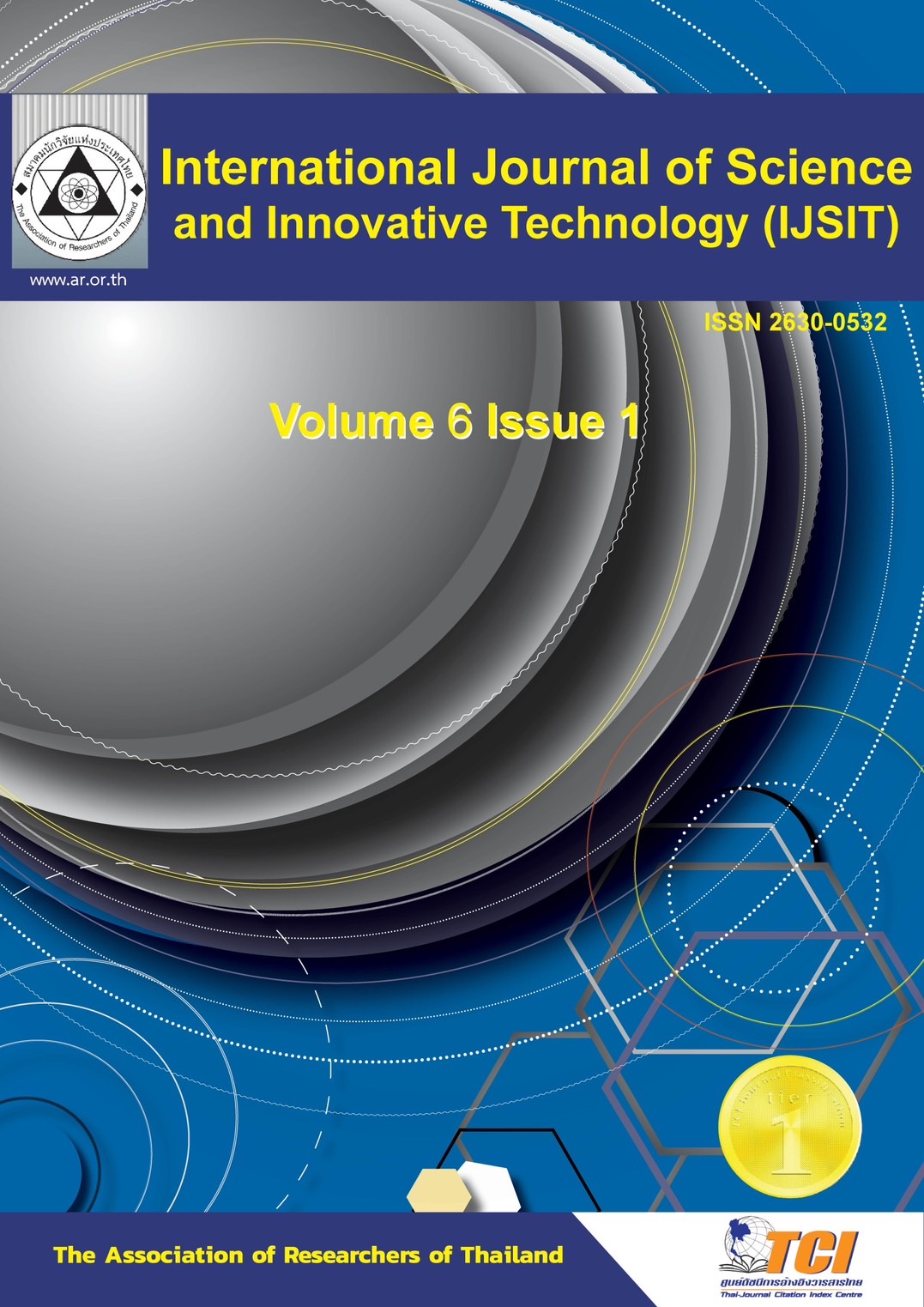Innovative Characteristic Assessment of Air Pollution in Bangkok
Main Article Content
Abstract
In Thailand, the major air pollutants include Sulfur dioxide, Nitrogen dioxide, Carbon monoxide, Ozone, and Particulate matter. At present, the air pollutant that remains a major problem is particulate matter. Especially in areas with heavy traffic in Bangkok. The study findings of the trend of air pollution in Bangkok for the past 10 years, revealed that, in most air quality measuring stations, sulfur dioxide and nitrogen dioxide tended to decrease whereas carbon monoxide, ozone, and PM10 tended to be different depending on stations. The primary pollutants tended to have positive relationships. Ozone, the secondary pollutant, could not see a positive relationship with other parameters. PM10 attended to increase, exceeding standards, in winter of every year. In winter, the weather was dry, and the relative humidity decreased, resulting in the long lingering dust in the air. The emission of primary pollutants revealed that they would have the highest concentration in the morning and gradually decrease until the evening, mainly depending on traffic congestion. The concentration of air pollution was high at each time of congested traffic. A positive relation was found between nitrogen dioxide and the amount of traffic as nitrogen dioxide came from direct fuel combustion in cars.
Article Details

This work is licensed under a Creative Commons Attribution-NonCommercial-NoDerivatives 4.0 International License.
References
Apaporn Ruchiraset, & Kraichat Tantrakarnapa. (2018). Time series modeling of pneumonia admissions and its association with air pollution and climate variables in Chiang Mai Province, Thailand. Environmental Science and Pollution Research, 25(33), 33277-33285. doi:10.1007/s11356-018-3284-4
Bouble, W. R., Fox, L. D., Turner, D. B., & Sterm, A. C. (1994). Fundamentals of air pollution (3rd ed.). London: Academic Press.
Brechler, J. (2000). Model assessment of air-pollution in Prague. Environmental Monitoring and Assessment, 65(1), 269-275. doi:10.1023/A:1006490627003
Deaves, D. M., & Lines, I. G. (1998). The nature and frequency of low wind speed conditions. Journal of Wind Engineering and Industrial Aerodynamics, 73(1), 1-29. doi:10.1016/S0167-6105(97)00278-X
Department of Alternative Energy Development and Efficiency. (2020). Renewable energy strategy. Retrieved February 17, 2563 from
https://www.dede.go.th/ewt_news.php?nid=646&filename=index
Department of Land Transport. (2017). Statistics of number of cars by fuel type in Bangkok. Retrieved January 30, 2017 from http://apps.dlt.go.th/statistics_web/vehicle.html
Energy Policy and Planning office (EPPO) Ministry of Energy. (2018). Oil and electricity usage situations 2018. Retrieved from http://www.eppo.go.th/index.php/th/informationservices/situation-energy
Environmental Research Group. (2017). The openair project. Retrieved from http://www.openair-project.org/Default.aspx
Johnston, H. J., Mueller, W., Steinle, S., Vardoulakis, S., Tantrakarnapa, K., Loh, M., & Cherrie, J. W. (2019). How harmful is particulate matter emitted from biomass burning? A thailand perspective. Current Pollution Reports, 5(4), 353-377. doi:10.1007/s40726-019-00125-4
Narut Sahanavin, Kraichat Tantrakarnapa, & Tassanee Prueksasit. (2016). Ambient PM10 and PM2.5 concentrations at different high traffic-related street configurations in Bangkok, Thailand. Southeast Asian Journal of Tropical Medicine and Public Health, 47(3), 528-535.
Narut Sahanavin, Tassanee Prueksasit, & Kraichat Tantrakarnapa. (2018). Relationship between PM10 and PM2.5 levels in high-traffic area determined using path analysis and linear regression. Journal of Environmental Sciences, 69, 105-114. doi:10.1016/j.jes.2017.01.017
Nopaporn Panit. (2007). Textbook of air pollution treatment system. Bangkok: Department of Industrial Works, Chula Unisearch, Chulalongkorn University.
Mäkelä, K., Kanner, H., & Laurikko, J. (1996). Road traffic exhaust gas emissions in Finland-LIISA 95 calculation software. (In Finnish). VTT communities and infrastructure, transport research, research notes 1772. Technical Research Center of Finland, Espoo(Mäkelä K., Kanner H., and Laurikko J., 1996. Road traffic exhaust gas emissions in Finland-LIISA 95 calculation software. (In Finnish). VTT Communities and Infrastructure, Transport Research, Research Notes 1772, Technical Research Center of Finland, Espoo, 45pp. + App. 51pp.), 45-51.
Pollution Control Department. (2017). General air quality standards in the atmosphere. Retrieved from http://www.pcd.go.th/info_serv/reg_std_airsnd01.html
Pollution Control Department. (2000). Database of air and noise pollution sources in Thailand 2000. Bangkok: Pollution Control Department.
Sharan, M., Yadav, A. K., & Singh, M. P. (1995). Comparison of sigma schemes for estimation of air pollutant dispersion in low winds. Atmospheric Environment, 29, 2051-2059.
Smith, F. B. (1992). Low Wind-speed meteorogy. Meteorological Magazine, 121(1439), 141-157.
Somrat Kerdsuwan. (2004). Combustion and pollution control. Pathum Thani: Sky Book Company Limited.
Thanikan Lapapipatt. (2006). Relationship between ozone generation and precursors and meteorological factors in Bangkok and suburb. Bangkok: Mahidol University.
Wissanupong Kliengchuay, Aronrag Cooper Meeyai, Suwalee Worakhunpiset, & Kraichat Tantrakarnapa. (2018). Relationships between meteorological parameters and particulate matter in Mae Hong Son Province, Thailand. International Journal of Environmental Research and Public Health, 15(12), 1-13. doi:10.3390/ijerph15122801


